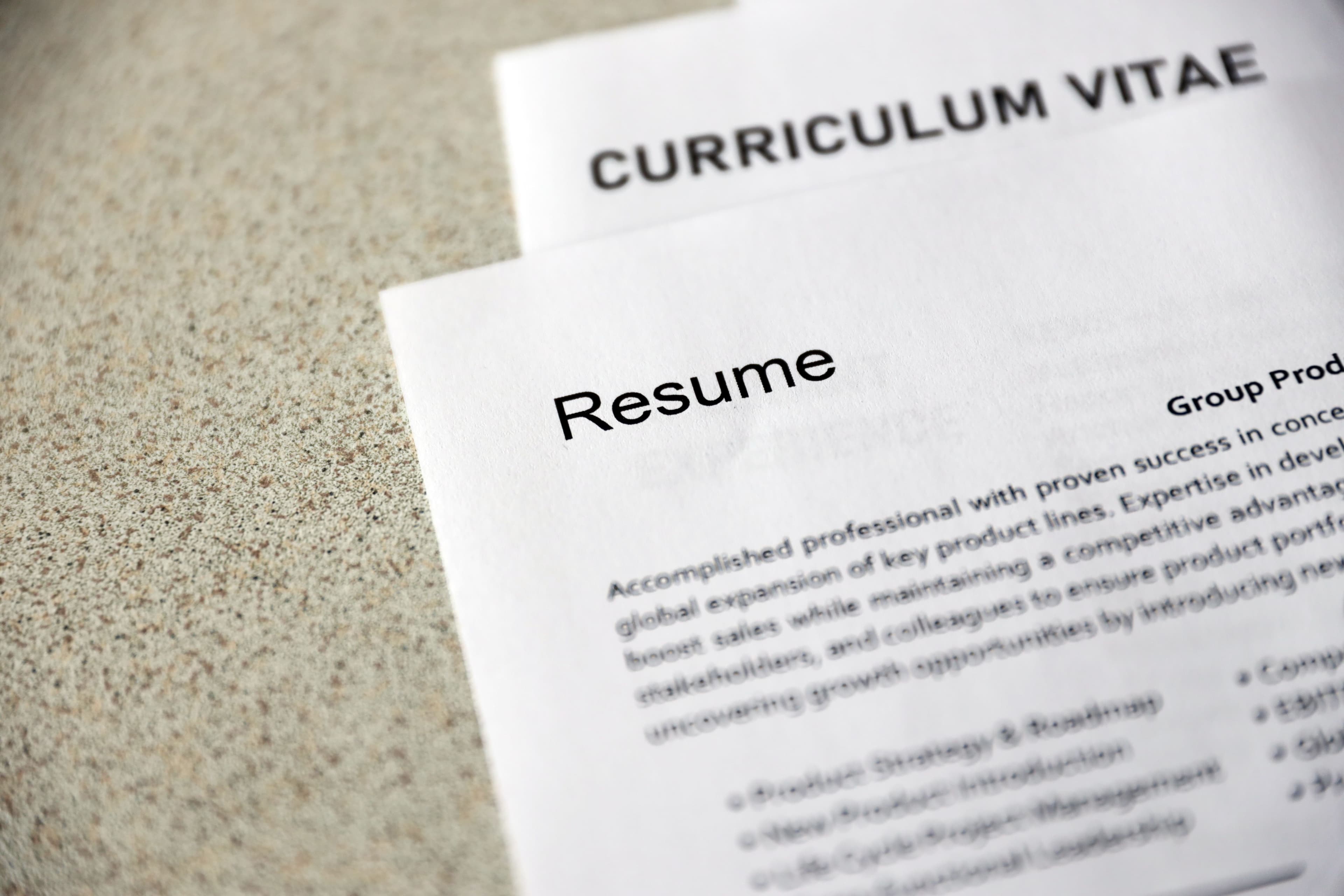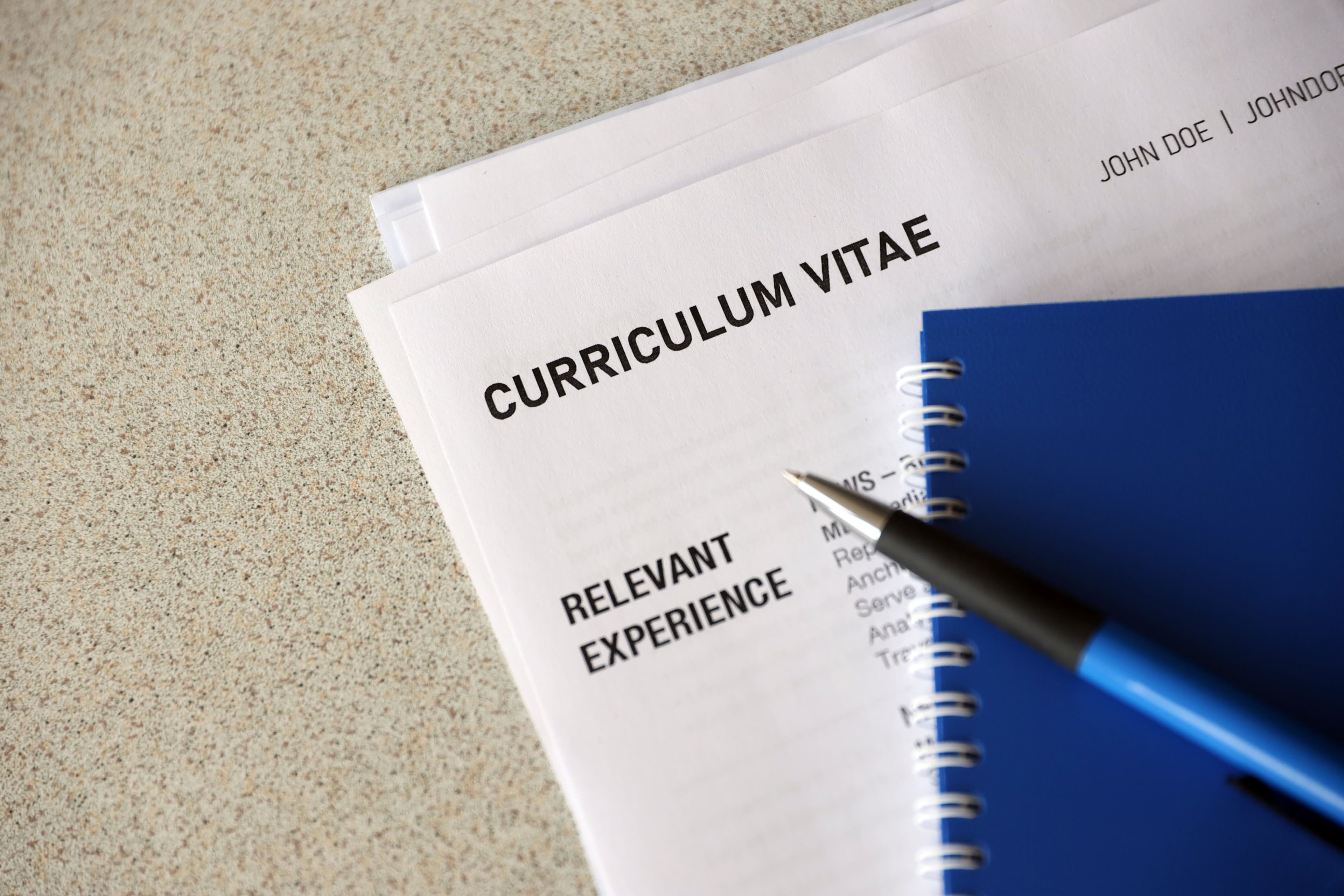What is the Difference Between a Resume and a CV?
03.17.2025
Job Resources

Have you ever come across job requirements that specifically ask for a “CV,” while another position requests a “resume,” and wondered if the two are the same document? You’re not alone.
Many people use the terms “resume” and “CV” interchangeably, but they serve distinctly different purposes—especially in regions like the United States, where each has its own place in the job application process.
This blog post will clear up the confusion once and for all. First, we’ll define both a resume and a CV, including their structures and typical uses. Then, we’ll dive into the key differences — covering everything from length and content to the industries and regions where each is most commonly used. Finally, we’ll explore best practices for drafting each document, highlight some common mistakes to avoid, and wrap up with a concise summary.
By the time you finish reading, you’ll have a thorough understanding of how resumes differ from CVs and how to determine which one you need for your next job application.
But first, we need to go over each of these important documents.
What is a Resume?
A resume is, in simplest terms, a focused snapshot of your professional history. Its primary purpose is to present your most relevant work experience, skills, and achievements in a concise manner to prospective employers or recruiters. Think of it as a personal marketing tool — an at-a-glance document that highlights why you’re a good fit for a specific role.
Length and Structure
Typically, a resume should be one to two pages long. The structure can vary, but most resumes include the following sections:
- Contact Information: Your name, phone number, email address, and sometimes a link to a professional portfolio or LinkedIn profile.
- Professional Summary or Objective: A short paragraph or bullet points summarizing your key skills and career aspirations.
- Work Experience: A reverse chronological list of your relevant positions. Each entry usually includes the company name, job title, dates of employment, and bullet points detailing your responsibilities and achievements.
- Education: School(s) attended, degree(s) earned, and graduation date(s). For recent graduates or career changers, education may appear above work experience.
- Skills Section: Highlights your relevant hard and soft skills — often tailored to each job application.
- Additional Sections (Optional): Certifications, awards, volunteer work, or professional affiliations.
Purpose and Emphasis
A resume should be as relevant to the job in question as possible. Hiring managers spend only a short time—sometimes mere seconds—scanning each application. Your goal is to showcase the accomplishments and skills that align closely with the position’s requirements. Concrete, quantifiable achievements (e.g., “Implemented a new sales strategy resulting in 20% increased revenue”) carry more weight than generic job responsibilities.
Resumes are widely used in the United States for most corporate, nonprofit, and government positions. Outside of academia or specialized industries, it is almost always the primary document required by employers.
Still have more questions? Check out our guide on how to write a resume.
What is a CV?
A curriculum vitae, commonly referred to as a CV, is a detailed overview of your academic and professional achievements. The term translates from Latin as “course of life,” which accurately reflects its function: a CV aims to capture the breadth of your scholarly and professional journey over time.
Length and Structure
Unlike a resume, there is no strict page limit. A CV can be several pages or even longer, depending on your career stage and the scope of your experience. While CV formats can differ slightly by field or region, they typically include:
- Contact Information: Similar to a resume—your name, phone number, and email address.
- Education History: Often comes first and lists all degrees earned (bachelor’s, master’s, doctorate), along with the institution, graduation dates, and, if relevant, your thesis or dissertation topic.
- Research Experience: Projects, lab work, or studies you have undertaken or assisted with, especially in academic and scientific fields.
- Teaching Experience: If you’ve taught classes or served as a teaching assistant, it’s crucial to detail responsibilities and accomplishments.
- Publications and Presentations: Peer-reviewed articles, conference papers, posters, or books you’ve authored or co-authored.
- Grants, Fellowships, and Awards: Any funding or recognition you’ve received for academic, research, or professional endeavors.
- Professional Experience and Service: Relevant work history, editorial positions, committee memberships, or other service roles.
- References: Often included at the end, especially in academic contexts.
Purpose and Emphasis
A CV offers a complete timeline of your professional life, with special attention to your academic achievements. These documents are crucial for positions in higher education, research institutions, and certain international opportunities.
Regardless, the emphasis remains on thoroughness: every publication, every presentation, and every relevant academic or professional milestone should be recorded and updated as your career evolves.
Still have more questions? Check out our guide on how to write a CV.
Key Differences Between a Resume and a CV
Now that we’ve gone through a refresher of the purpose and format of resumes and CVs, you can see that they aren’t exactly interchangeable. Now let’s take a closer look at these two different documents.
1. Length
The most obvious difference is length. Resumes are ideally one to two pages long, sometimes extending to three if you have a lengthy, highly relevant history. CVs, on the other hand, can stretch well beyond this limit. Someone who has been working in academia for decades might have a CV of 10 pages or more.
2. Scope of Content
A resume spotlights key achievements and relevant experiences tailored to a specific role. You’ll mention the highlights that demonstrate you’re qualified for that particular position.
A CV, meanwhile, aims to be comprehensive. It captures practically every detail of your scholarly, research, and professional life, from the start of your higher education to your latest accomplishments. Even if a past publication or teaching experience is not overtly relevant to a current opportunity, it may still appear on your CV to reflect the continuity of your academic career discovery.
3. Purpose and Usage
Resumes are typically used in corporate, nonprofit, and governmental roles outside of academia. Employers who ask for a resume want a concise, targeted snapshot of your background.
CVs are the gold standard in academia, research, and in many countries outside the U.S., where “CV” often serves as a catch-all term for a professional document. If you’re aiming for a tenure-track position, a fellowship, or a grant, you’ll almost certainly need to provide a CV.
4. Level of Detail
A good resume is relevant and targeted above all else: it should show how you’re the right match for a specific role. Bullet points will often reference measurable results — like boosting sales numbers, cutting costs, or improving operational efficiency.
On the other hand, a CV dives into the nitty-gritty of your work, especially with publications, speaking engagements, and research. Clarity is still important, but you’re not omitting details solely for the sake of brevity.
5. Format and Style
Because resumes can be read in just a few seconds, they usually have a crisp, scannable format. Bulleted lists, clear headings, and plenty of white space are common.
CVs also benefit from clarity but often include more narrative elements in specific sections — like describing a research project or listing your responsibilities during a teaching assignment. It’s also standard to list references directly on a CV, something rarely done on a resume.
Overall, while both documents aim to represent your professional identity, they cater to different industries, regions, and expectations regarding depth and detail.
When to Use a Resume
If you’re applying for a position in the corporate world, a nonprofit organization, or a U.S. based government agency, you’re almost certainly going to submit a resume. The same goes for most roles within fields like finance, marketing, technology, and hospitality — any job where the hiring manager prioritizes quickly scanning for relevant skills and experience.
Why Choose a Resume?
- Conciseness: Hiring managers often have a stack of applications to review. A clear, succinct resume allows them to quickly grasp your fit for the role.
- Role-Specific Tailoring: Resumes can be customized for each position. If you’re pivoting from marketing to project management, you can highlight the transferable skills and achievements directly applicable to the new position.
- Widely Recognized Format: In many countries, especially the U.S., hiring professionals expect a resume by default and are adept at scanning its standard structure.
Key Considerations
- Stick to 1–2 Pages: Unless you have a highly specialized, lengthy career that demands more space, aim for a concise document.
- Showcase Achievements: Focus on the metrics—like sales volumes, cost savings, or performance improvements—to demonstrate your impact.
- Use Keywords: Incorporate keywords from the job listing to help pass applicant tracking systems (ATS).
Ultimately, a resume is the best choice when the recruiter needs to see your most relevant work history and skills at a glance. If the role isn’t academic or research-driven, and especially if it’s in a region accustomed to resumes, this is the right document.
When to Use a CV
In academic circles — think universities, think tanks, and research labs — a CV is often non-negotiable. When a committee decides whether to bring you on as a research associate, a professor, or a fellow, they want a comprehensive picture of your intellectual and professional journey. This extends beyond educational credentials to include the scope and quality of your academic output.
Why Choose a CV?
- Depth and Detail: Academia values the full extent of your contributions — publications, presentations, courses taught, grants secured, and so on. A short summary doesn’t give committees enough context.
- Career Progression Over Time: A CV can illustrate how your research interests have developed, how you’ve built a network of strategic relationships in academia, and how your responsibilities have evolved in various roles.
- International Requirements: Outside the U.S., many employers (academic and non-academic alike) often request a “CV” that might resemble a detailed resume but still leans toward comprehensiveness.
Key Considerations
- No Rigid Page Limit: Rather than keeping to one or two pages, a CV can be as long as needed to cover pertinent accomplishments.
- Chronological Organization: Present your experience in reverse chronological order for clarity.
- Frequent Updates: Any time you publish a new article, speak at a conference, or receive a grant, add it to your CV.
Use a CV if you’re targeting roles at universities, research institutions, or if you’re applying internationally where “CV” is the standard term. A thorough list of your academic and professional milestones will be invaluable to decision-makers in these contexts.
CV vs Resume: Common Mistakes and Myths
Myth 1: A Resume and a CV Are Interchangeable
One of the most pervasive misconceptions is that “CV” is simply another word for a resume. While it’s true that in some countries “CV” is used in a broader sense, in the U.S. context these documents serve different purposes. Submitting a lengthy CV when a position calls for a one-page resume can appear out of touch, and vice versa.
Myth 2: One-Size-Fits-All Approach
Some job seekers believe they can create a single “master document” and use it for every application, be it corporate, academic, or otherwise. This approach can lead to an underwhelming submission. Tailoring your resume or CV to a specific role or institution can significantly improve your chances of success.
Mistake 1: Overstuffing a Resume
Trying to cram your entire career history into a one-page resume is a recipe for confusion. Your best bet is to select the most relevant experiences and keep content succinct.
Mistake 2: Undervaluing a CV
On the other hand, if you’re in an academic or research context, leaving out crucial publications, presentations, or funding details can hurt your candidacy. A CV needs completeness to showcase your expertise fully.
Mistake 3: Poor Formatting and Typos
Whether you’re writing a resume or a CV, basic errors in spelling, grammar, or layout can be deal-breakers. A neatly formatted document indicates professionalism and respect for the reader’s time.
Next Steps in Your Career Journey
Understanding the difference between a resume and CV is just the beginning. To maximize your career opportunities:
- Maintain both documents if you're exploring diverse roles
- Update them regularly with new achievements
- Customize each submission for specific opportunities
- Seek feedback from industry professionals
Remember, whether you need a resume or CV, the goal remains the same: presenting your professional value clearly and compellingly to potential employers. By following the distinctions and industry best practices covered here, you'll be well-equipped to make a strong impression in any application process.
Need more guidance on crafting the perfect resume or CV? Check out the My Career Shop podcast for insights, experiences, and tips for success from a range of industry experts.
Subscribe to My Career Shop Content
Stay up to date with Blog Posts and Podcast Episodes!
Your One Stop Shop For All Career Resources
Whether you are exploring new career paths, building your resume, or preparing for your next opportunity, our tools, templates, and guidance are designed to help you navigate your career journey with clarity and confidence.
Copyright © 2025 My Career Shop. All rights reserved.

























